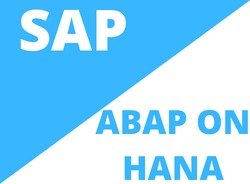
Q: What is ABAP on HANA?
A: ABAP on HANA is a programming model that allows developers to leverage the power of the SAP HANA database in their ABAP applications.
Q: What are the benefits of using ABAP on HANA?
A: Some benefits include faster data processing, real-time analytics, simplified data models, and improved performance of ABAP applications.
Q: How can you optimize ABAP programs for HANA?
A: You can optimize ABAP programs for HANA by using HANA-specific features like native SQL, advanced view building techniques, and utilizing HANA-specific functions.
Q: What is the difference between traditional ABAP and ABAP on HANA?
A: Traditional ABAP applications were primarily designed to run on traditional databases, while ABAP on HANA applications are optimized to run on the SAP HANA database, taking advantage of its in-memory capabilities.
Q: How can you access HANA database tables in ABAP?
A: You can access HANA database tables in ABAP by creating database procedures, using Open SQL with HANA-specific features, or by consuming HANA views and tables as external data sources.
Q: What are CDS views in ABAP on HANA?
A: CDS (Core Data Services) views are a way to define and consume semantically rich data models in ABAP on HANA. They provide a simplified and unified way to define data structures.
Q: How can you use CDS views in ABAP programs?
A: You can use CDS views in ABAP programs by consuming them as database tables or by joining them with other CDS views or database tables using associations.
Q: What is AMDP in ABAP on HANA?
A: AMDP (ABAP Managed Database Procedures) allows you to write database procedures directly in ABAP code. It provides a way to combine the power of SQLScript with ABAP.
Q: How can you measure the performance of ABAP programs on HANA?
A: You can measure the performance of ABAP programs on HANA using tools like SQL Monitor, SQL Trace, and the Code Inspector in ABAP Workbench.
Q: What is code pushdown in ABAP on HANA?
A: Code pushdown refers to the process of moving calculations, filtering, and aggregations from the ABAP application layer to the HANA database layer to achieve better performance.
Q: What are the different types of table buffering available in ABAP on HANA?
A: In ABAP on HANA, you can use HANA-optimized DSO (Data Store Object) buffering and HANA external view buffering for improved performance.
Q: How can you debug ABAP programs on HANA?
A: You can debug ABAP programs on HANA using the standard ABAP debugger. Additionally, you can also use the SQL Debugger to debug SQLScript code executed on the HANA database.
Q: What is the difference between SAP HANA and SAP S/4HANA?
A: SAP HANA is an in-memory database platform, while SAP S/4HANA is an intelligent ERP (Enterprise Resource Planning) suite that runs on the SAP HANA database.
Q: Can you use ABAP on HANA with non-HANA databases?
A: Yes, ABAP on HANA can also be used with non-HANA databases, but you may not be able to take full advantage of the HANA-specific features and optimizations.
Q: Are there any15. Are there any specific considerations for migrating existing ABAP programs to ABAP on HANA?
A: Yes, when migrating existing ABAP programs to ABAP on HANA, it is important to analyze and optimize the data models, replace any obsolete database access techniques with HANA-specific ones, and consider code pushdown techniques to maximize performance gains.
Please note that ABAP on HANA is a vast topic, and these questions and answers provide a brief overview. For more in-depth information and understanding, it is recommended to refer to official SAP documentation and additional learning resources.




